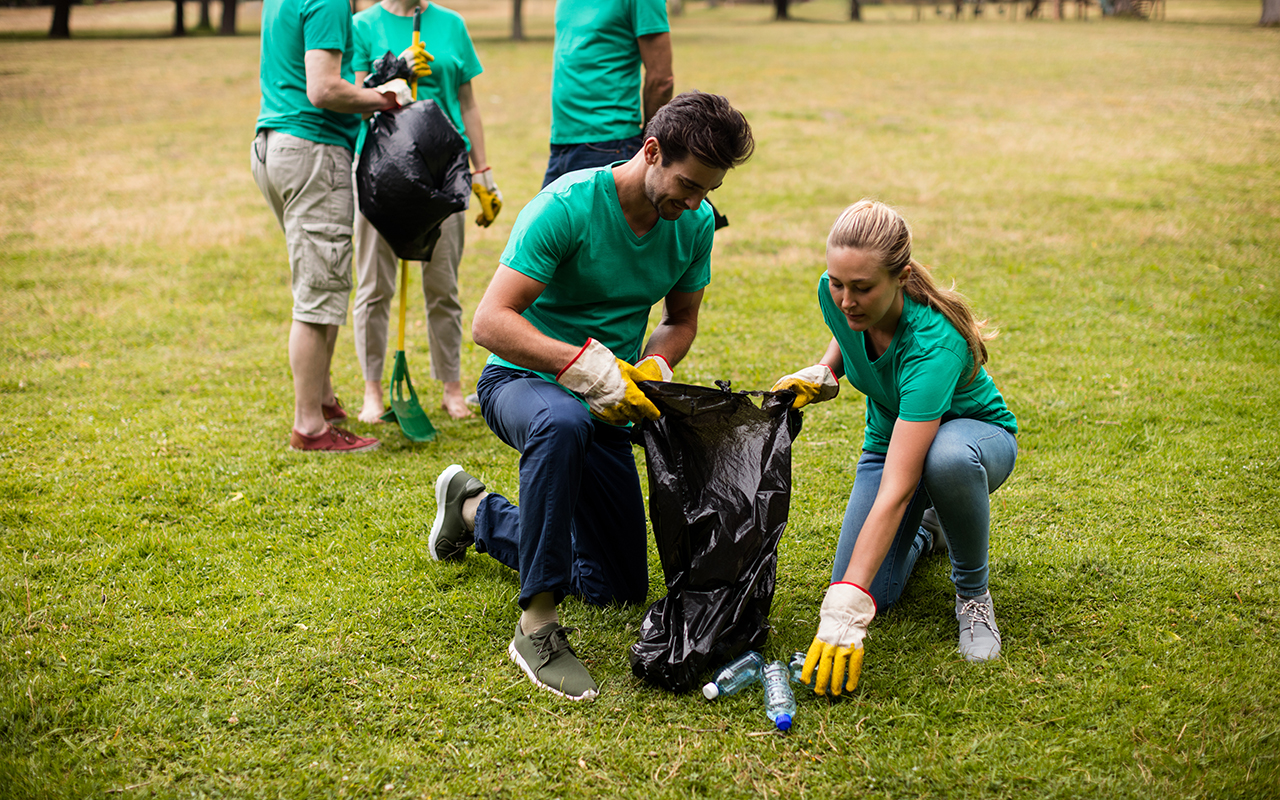
The following document can be read online and/or downloaded by clicking HERE.
Roughton Parish Litter Picking Scheme
Whilst the County Council are committed to maintaining a clean environment in Lincolnshire, there are times when a little bit of help is needed, and this is when some local communities wish to undertake some local litter picking. In recognition of this, Lincolnshire County Council have provided Roughton Parish Council with some litter picking kits for use by local residents should they so wish. The kits comprise a number of Litter Picking Sticks, Hi viz vests and some clear rubbish bags.
If you would like to borrow some of these kits to use in your area, please email the Parish Clerk who will make the necessary arrangements with you. (clerk@roughtonparishcouncil.gov.uk) When you have completed your litter pick, you can take your filled bags to your local household waste recycling centre. If you are unable to go to your local HWRC, you can contact your local district council to discuss collection of your collected litter.
All participants in the litter pick must read and please observe the following guidance carefully before undertaking litter picking.
Individuals and groups acting as volunteer litter pickers can be exposed to a number of easily avoidable hazards. This guidance has been produced to help volunteers identify these hazards, making their involvement safe and enjoyable, and should be followed by all volunteers.
GUIDANCE FOR COMMUNITY LITTER PICKS
Lincolnshire County Council, along with our partners in the District Council, acknowledges and appreciates the benefits of community litter picks and will provide support by providing empty sacks and collecting filled sacks.
Please Remember Safety first!
You should always put the safety of yourself and members of your group first. Litter picking SHOULD NOT be carried out in areas where there is a high risk to participants. This includes roads, highways, and riverbanks.
The level of risk will vary at each location, so prior to commencing a litter pick, you must visually inspect the site, and then complete the risk assessment.
The HSE (Health & Safety Executive) have lots of information and guidance on their website with regards how to undertake risk assessments, including a simple risk assessment template that you can download and use.
The litter picking group leader should ensure that all people involved in the litter pick are made aware of the findings of the risk assessment and have received all necessary, appropriate training before the litter pick commences.
General guidance:
• Volunteers should wear protective high visibility clothing and use appropriate protective equipment (boots & gloves).
• Volunteers should never clear litter from the side of a road or areas with high levels of traffic movement.
• Choose sensible, suitable locations: It is essential the litter pickers are visible to both pedestrians and road users and that litter picks are only conducted in clear daylight.
• Avoid reaching into hedges or undergrowth that may expose the face, eyes and skin to scratches from thorns or branches.
• Avoid working close to rivers and ditches or on steep slopes, as there is an increased risk of slips and falls.
• If an item of litter cannot be safely reached with a litter picker, leave it.
• Be mindful of wildlife - Avoid disturbing animals and birds that may be nesting and also be wary of wasp and bee nests.
• Do not enter an area where works are restricted (for example road works) or where the public do not have a right to entry, such as privately owned land.
• You do not need to sort or separate litter you have collected.
• Litter should be bagged and bags tied securely when full. Large items do not need to be bagged.
• No collections should be made directly from households, from the road or in other potentially unsafe areas.
• Ensure that volunteers wash their hands and avoids touching their face or mouth during and after the litter pick.
• Please do not attempt to pick up any hazardous waste. Hazardous waste should be reported to the appropriate District Council so that it can be collected safely. Hazardous waste may include:
hypodermic needles
drugs waste
chemicals
asbestos
broken glass
waste collected from rivers
• Lifting and Handling Materials:
Volunteers should be aware of the risk of injury by carrying bags of collected litter and attempting to lift and carry heavy materials.
To avoid injury, basic principles of manual handling should be applied:
• Use litter pickers to prevent constant bending and stretching.
• Make sure an item is safe to handle with no sharp edges or hazardous contents.
• Decide if an item can be safely moved either by one or two people.
• Only try to move an item if this can be done so without straining.
• When lifting an item, bend the legs and keep the back straight.
The above guidance is not exhaustive and has been provided to help assist with organised community litter picks.
Disclaimer:
Volunteers should not participate in litter picks unless they understand and accept that participation is entirely at their own risk. Volunteers are not working for, or on behalf of Lincolnshire County Council nor Roughton Parish Council and therefore the Councils cannot be held liable for any loss, damage or injury caused as a result of the actions and omissions of volunteers.
Volunteer litter pickers are not working for, or on behalf of the Councils, and therefore are not covered by the Councils's insurance. You may want to consider insurance cover for your clean-up, find advice at https://litteraction.org.uk/infocentre/insurance.
|
Contact details for District Councils (for arranging collection of sacks after your litter pick) |
||
|
East Lindsey District Council |
01507 601111 |
|
|
|
|
|
ON COMPLETION OF LITTER PICK, PLEASE RETURN TO……………………………………………………………………
BY PHONING AND ARRANGING ON ………………………………………………………………………….
